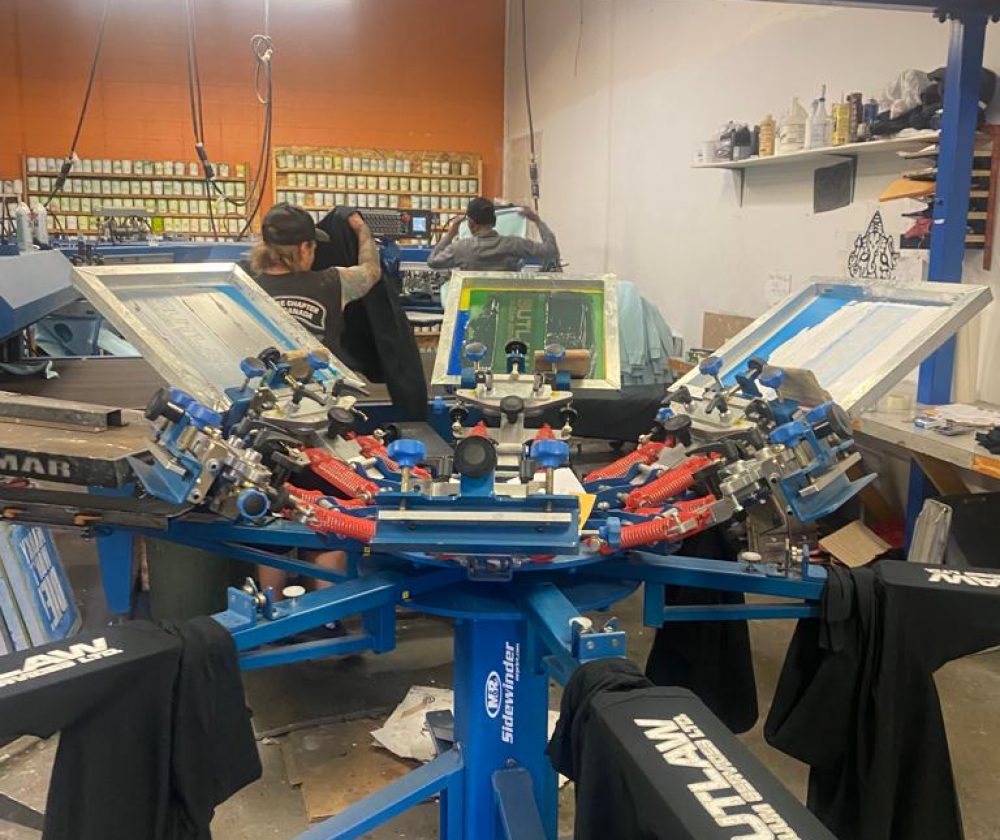The Ultimate Guide to Creating Stunning Screen Printing Designs That Pop

Introduction
As a screen printing enthusiast, I know how important it is to create designs that stand out. Screen printing is a versatile and cost-effective method of printing that is used by many businesses and individuals to create unique and eye-catching designs. In this ultimate guide, I’ll take you through the process of creating stunning screen printing designs that pop. We’ll cover everything from understanding the screenprinting process to choosing the right printing screen mesh, creating a screen printing stencil, designing for screen printing, print optimization techniques, and much more. Let’s dive in!
Screen Printing Designs
Screen printing designs are created by transferring ink onto a substrate through a mesh screen. This process involves creating a stencil of the design to be printed on the screen, which is then used to transfer the ink onto the substrate. Screen printing is a popular method of printing because it allows for the printing of high-quality images on a variety of substrates, including textiles, paper, and plastics.
Understanding the Screenprinting Process
Before we dive into creating screen printing designs, it’s important to understand the screenprinting process. The process involves several steps, including creating a stencil, preparing the screen, applying ink to the screen, and transferring the ink onto the substrate. Each step is critical to creating a high-quality print, and it’s important to take the time to ensure that each step is done correctly.
Choosing the Right Printing Screen Mesh
Choosing the right printing screen mesh is critical to creating high-quality screen printing designs. The mesh determines the level of detail that can be achieved in the design. The finer the mesh, the more detailed the design can be. It’s important to choose a mesh that is appropriate for the design being printed.
Creating a Screen Printing Stencil
Creating a screen printing stencil involves transferring the design onto the screen. There are several methods for creating a stencil, including using photo emulsion, direct emulsion, or vinyl. Each method has its advantages and disadvantages, and it’s important to choose the method that is best suited for the design being printed.


Designing for Screen Printing - Tips and Tricks
Designing for screen printing requires a different approach than designing for other printing methods. It’s important to keep in mind the limitations of the screenprinting process, such as the number of colors that can be printed and the level of detail that can be achieved. Here are a few tips and tricks for designing for screen printing:
- Use bold, simple designs that are easy to print
- Limit the number of colors used in the design
- Avoid using gradients or shading
- Use high-contrast colors to create a bold and eye-catching design
Screen Printing Ideas for Modern Designs
Screen printing is a versatile printing method that can be used to create a variety of designs. Here are a few screen printing ideas for modern designs:
- Geometric patterns
- Abstract designs
- Typography
- Illustrations
- Photographic prints
Print Optimization Techniques for Screen Printing Designs
Print optimization is the process of adjusting the printing parameters to achieve the best possible print quality. Here are a few print optimization techniques for screen printing designs:
- Use the right ink for the substrate being printed
- Adjust the pressure and speed of the printing process
- Use the correct squeegee angle
- Adjust the off-contact distance
Tools and Resources for Creating Stunning Screen Printing Designs
There are several tools and resources available for creating stunning screen printing designs. Here are a few:
- Adobe Photoshop and Illustrator for designing
- Screen printing software for creating stencils
- Screen printing equipment for printing
- Online tutorials and forums for learning and sharing ideas
Top Screen Printing Design Trends to Watch Out For
Like any other design field, screen printing has its own set of trends. Here are a few top screen printing design trends to watch out for:
- Minimalism
- Hand-drawn designs
- Use of negative space
- Gradients and fades
- Metallic inks
Best Practices for Creating Screen Printing Designs That Pop
Creating screen printing designs that pop requires attention to detail and careful planning. Here are a few best practices to keep in mind:
- Keep the design simple and bold
- Use high-contrast colors
- Choose the right mesh and ink for the substrate being printed
- Test the design before printing in bulk
Conclusion
Creating stunning screen printing designs that pop requires a combination of creativity, technical knowledge, and attention to detail. By following the tips and techniques outlined in this guide, you’ll be well on your way to creating high-quality screen printing designs that stand out. Remember to keep the design simple, choose the right mesh and ink, and optimize the printing process for the best possible results. Happy printing!
Ready to create stunning screen printing designs that pop? Check out our website www.creativegiant.ca or call us at (780) 430-9530. Our team of experts is ready to answer all your questions and help you with all your t-shirt screen printing needs!